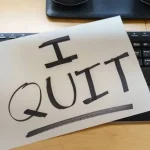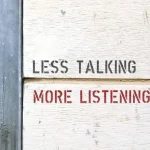I’ve always believed that communication is the backbone of human connection. Whether you’re leading a team, building relationships, or simply navigating daily interactions, mastering the art of effective communication can transform your life. In this article, I’ll share my insights on how to become an effective communicator, blending my experiences with practical tips you can apply. Together, we’ll explore key strategies, habits, and mindsets to help you express yourself clearly and connect with others meaningfully.
Understanding the Foundations of Effective Communication
When I first started focusing on improving my communication skills, I realized it’s not just about speaking well—it’s about listening, understanding, and adapting. Effective communication begins with clarity. I ask myself: What’s my message? Who am I speaking to? You should do the same. Knowing your audience allows you to tailor your words in a way that resonates.
One critical element I’ve learned is active listening. It’s not enough to hear someone; you need to truly engage with what they’re saying. Nod, maintain eye contact, and reflect back what you’ve heard. For example, I often say, “So, what you’re telling me is…” This shows I’m present and value the conversation. Try it—you’ll notice how much deeper your interactions become.
See; What Is Active Listening?
Building Confidence in Your Voice
I used to stumble over my words, unsure if people would take me seriously. Confidence, I discovered, is a game-changer in communication. You don’t need to be loud or overpowering—just authentic. Start by practicing in low-stakes settings. I began with casual chats with friends, focusing on speaking slowly and clearly. Over time, my confidence grew.
You can build yours too. Record yourself speaking, then listen back. Are you rushing? Do you sound hesitant? Adjust accordingly. Another trick I use is positive self-talk before big conversations: “I’ve got this. My voice matters.” It’s simple, but it works. Confidence isn’t about perfection—it’s about owning your message.
Mastering Non-Verbal Communication
Here’s something I overlooked early on: words are only part of the story. Your body language, facial expressions, and tone carry just as much weight. I once gave a presentation slouched over, arms crossed, and wondered why the room felt disengaged. Then I learned to stand tall, gesture naturally, and smile. The difference was night and day.
Pay attention to your non-verbal cues. Are you making eye contact? Is your posture open? You want to project approachability and trust. Mirror the other person subtly—it builds rapport. For instance, if they lean in, I might do the same. These small adjustments amplify how effectively you connect.
Enhancing Clarity and Conciseness
I’ll admit, I used to ramble. My thoughts would spill out in a jumbled mess, leaving listeners confused. Over time, I honed the skill of being concise yet clear. Before I speak, I pause to organize my thoughts. You should try this too—think about your key point and stick to it.
Avoid jargon unless your audience gets it. I once threw around technical terms in a casual chat and watched eyes glaze over. Now, I keep it simple: “Here’s what I mean, in plain terms.” Clarity isn’t about dumbing down; it’s about making your message accessible. Practice trimming the fat from your sentences—you’ll sound sharper and more professional.
Adapting to Different Audiences
One lesson I’ve internalized is that effective communicators adjust their style. When I talk to my team, I’m direct and collaborative. With a stranger, I’m warmer and more curious. You’ve got to read the room. Are they formal or laid-back? Do they want details or the big picture?
Ask questions to gauge their vibe: “What do you think about this?” or “How can I explain it better?” I’ve found that flexibility keeps conversations flowing. You don’t need to overhaul your personality—just tweak your approach. It’s like tuning a radio to the right frequency.
Embracing Feedback and Growth
I wasn’t born a great communicator; I grew into it through feedback. After a talk or meeting, I ask trusted people, “How did I do? What could I improve?” You should seek this too—it’s gold. Sometimes the truth stings (like when I was told I interrupt too much), but it’s how you evolve.
Reflect on your own interactions as well. I keep a mental note: Did I listen enough? Was I clear? Continuous improvement is key. Resources like communication workshops or books on interpersonal skills can also guide you—I’ve leaned on them plenty.
Overcoming Common Communication Barriers
We all hit roadblocks. For me, it’s impatience—I want to jump in before someone finishes. Maybe for you, it’s shyness or overthinking. Identify your hurdle. If you’re nervous, breathe deeply before speaking. If you interrupt, pause and let others finish. I’ve trained myself to count to three silently—it’s a small fix with big results.
Cultural differences can trip you up too. I once misread a colleague’s bluntness as rudeness until I learned it was just their style. Be curious, not defensive—ask questions to bridge gaps. Patience and empathy go a long way.
Putting It All Together
Becoming an effective communicator isn’t a one-and-done deal—it’s a journey. I’m still learning, refining my skills every day. Start small: practice listening today, tweak your tone tomorrow. You’ll see progress faster than you think. The reward? Stronger relationships, more influence, and a voice that truly lands.
So, where do you begin? Pick one area—maybe confidence or clarity—and focus there. I promise, as you grow, you’ll feel the shift. Communication isn’t just a skill; it’s a superpower. Let’s unlock it together.



